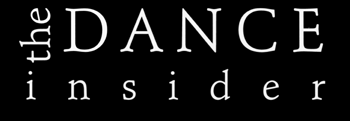|
|
the
New York manufacturer of fine dance apparel for women and girls.
Click here to see a sample of our products and a
list of web sites for purchasing.
With Body Wrappers it's always performance at its best.
|
Go back to Flash Reviews
Go Home
Flash
Report, 11-21: 'Lost' and Found
Tallchief, Franklin, and a Few Friends Recoup Balanchine Jewels
By Susan Yung
Copyright 2003 Susan Yung
NEW YORK -- Dance performances
are magical in part because, in contrast with precisely scored music,
they are usually unscripted -- unique and ephemeral, like individual
snowflakes. While many works have been notated, many performances
have surely been lost to the ages. Archival performance videotaping
is now standard at even smaller performing venues, but what exists
on tape may languish, untapped. The George Balanchine Foundation
has set about filling in some gaps in George Balanchine's repertory,
reconstructing segments based on historical film clips of dances
no longer performed. Twenty-one such films exist. Segments are being
restored on contemporary dancers; they are aided by those who danced
the works and/or those who are intimately familiar with the technique.
This past Sunday and Monday, Works & Process at the Guggenheim,
with the assistance of the Balanchine Foundation, showed restored
excerpts from "Le Baiser de la Fee" (1937, to Stravinsky) and "Mozartiana"
(1933/45, to Tchaikovsky), plus onstage coaching sessions and film
clips in an engaging lecture/demonstration format. (Balanchine used
the music from both these pieces in other, later, works.)
Three current New York
City Ballet principals performed the brief segments: Nikolaj Hubbe,
Jenifer Ringer, and Miranda Weese. First, we watched coaching sessions
for both excerpts. Hubbe and Ringer, in 'Baiser,' received comments
from Maria Tallchief, the noble and legendary ballerina who danced
the role of Fee (a gypsy Fairy) decades ago. Besides correcting
Ringer's minor mistaken steps (and disciplining Ringer to remove
the one leg warmer she wore to rehearse), Tallchief advised her
on the carriage of her shoulder, head, and arms, telling her to
lead sweeping arms with a slight break in the wrist. It is one thing
to hear such words spoken, but quite another to see the instructions
and response demonstrated so eloquently. Tallchief remains a powerful
presence onstage even in street clothes. (She said she found it
easier to dance dramatic roles "because I'm dramatic." Indeed.)
The film of her dancing the excerpt on which the restoration was
based showed how assertive and fiery the role could be. As Ringer
rehearsed, it seemed doubtful that she could ever approach the intensity
of Tallchief's performance. But when it came time to perform, Ringer
kicked it up a notch, doubtless inspired (or challenged) by Tallchief's
presence.
Frederic Franklin coached
Hubbe and Weese in a bit from "Mozartiana." Franklin approaches
his 90th birthday but appears decades younger, and his humor and
sharp insight made for fascinating banter. Having danced the original
work in 1933, he conveyed Balanchine's notes: he wanted it "elegant,
serene, not grand -- like Mozart." He encouraged the dancers to
appreciate the stillness present in the choreography. He recalled
his partner in the work, Alexandra Danilova, who, great as she was,
found some of the experimental steps tricky to understand, such
as a lift sequence in which the woman stabs her cross leg into arabesque.
(In fairness -- it did look weird.) She also asked if she could
not plie on pointe in one section, which can appear somewhat vulgar
in the context of classicism, but Balanchine nixed her request.
Prior to the performance
segment of the reconstructed excerpt from the original "Mozartiana,"
we watched a film of current NYCB principal Peter Boal performing
the later dance to the same piece of music, as choreographed by
Balanchine in 1981, two years before his death. The effect was like
looking at cursive script next to block lettering. The 1981 version
flowed quickly, filled with space-gobbling steps in ovals and diagonals,
and nifty, delicate croise shifts. The 1933 segment emphasized phrases
punctuated with lunges and starchy poses. It ended sublimely, with
Hubbe lowering Weese to the floor in a heartachingly slow spiral.
The restoration of these
"lost works" raises the question of why they were not kept in repertory
to begin with. But Balanchine was so prolific that it is impossible
to keep everything in rep, and his recycling of these particular
musical compositions surely helped keep the older versions on the
shelf. Dancers as athletes have been rapidly evolving over the last
70 years, and Balanchine's choreography certainly reflected what
must also be the changing tastes of the audience. Seeing the old
and new works juxtaposed, my eye found the modern appealing, perhaps
because of the contrast presented, or simply because it is a language
I am used to. To compare both is a wonderful opportunity to see
a great mind evolve through a historically rich span of time.
Go back to Flash Reviews
Go Home
|


